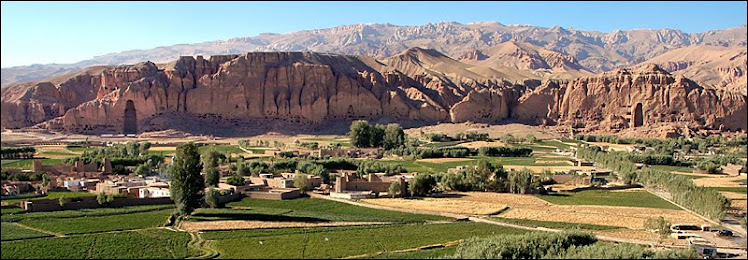North America's 1st Black Town?
100 Amazing Facts About the Negro: It was founded during slavery, and it wasn't in the U.S. South.
Gaspar Yanga's statue in the town named after him
(Erasmo Vasquez Lendechy)
(Erasmo Vasquez Lendechy)
Editor's Note: This column was first published on Dec. 3, 2012.
Amazing Fact About the Negro No. 8: What was the first black town in North America?
As I mentioned in my column about Juan Garrido, the first documented African to land in what is now the United States, in 1513, as a student I was under the impression that the first Africans arrived in the North America in 1619. That was when 20 or so slaves from Angola ended up at Jamestown, Va. Nothing could be further from the truth.
As a matter of fact, by 1620, when the Mayflower landed, about 500,000 Africans had already been shipped as slaves to the New World. In other words, those first 20 Africans who arrived in Virginia had a lot of company further to the south, starting in Florida.
And many of the first African slaves who arrived in the New World before 1620 landed in Mexico, which is a surprise to most of us living in the United States. By 1570, the year that a slave named Gaspar Yanga fled to the mountains near Veracruz to escape slavery, the colony of New Spain (as Mexico was called) "had received an estimated 36,500 Africans," the historian Herman Bennett tells us in his book, Africans in Colonial Mexico, "of which 20,000 had survived."
Moreover, by 1600, Bennett concludes, the number of Africans "collectively rivaled, if not outnumbered, Spaniards throughout New Spain." And at Veracruz, "persons of African descent constituted 63 percent of the nonindigenous population."
By 1810, Bennett continues, free blacks "numbered approximately 624,000, or 10 percent of the total population." Bennett correctly observes that the fact that Mexico by this time was "home to the second-largest slave and the largest free black populations may come as a revelation to those unaccustomed to thinking of Mexico as a prominent site of the African presence." Most Americans will find these facts astonishing. I know that I did when I first learned of them.
Mexico's African population traditionally was concentrated along its two coasts, one around the port of Veracruz (where most of the slaves landed) on the Gulf of Mexico, and the other in a district known as the Costa Chica, on the Pacific Ocean near Acapulco. And it was near Veracruz that the first black-ruled town was granted its status as a self-governing municipality by Spain in 1609, 11 years before the Mayflower. It is called Yanga, and a large statue of its founder graces the town square today.
The town of Yanga is named for Mexico's most famous runaway slave, Gaspar Yanga, whom the historian Jane Landers tells us in her book Slaves, Subjects, and Subversives: Blacks in Colonial Latin America was "an enslaved West African of the Bran nation." In 1570 or so, Yanga escaped from his enslavement near Veracruz and formed a "palenque" (a community of runaway slaves, or "maroons") in the mountains nearby at Cofre de Perote. Yanga's palenque survived illegally for almost 40 years, "raiding Spanish convoys along the Camino Real [Royal Road] to Ciudad Mexico [Mexico City] and nearby haciendas."
By 1609, the Spanish authorities had had enough. The Viceroy, Luis de Velasco II, mounted a major assault on the settlement, but to no avail. Under the leadership of an Angolan named Francisco de la Matosa, Yanga and his compatriots successfully defended themselves and then negotiated a settlement with the Spanish.
Their demands included 11 conditions, Landers tells us, among these: freedom for all of the runaway slaves who had lived in the settlement before 1608; official recognition of the town's sovereignty, including the right of Yanga and his heirs to become governors; exclusion of the Spanish, except on market days; and a Roman Catholic church administered by Franciscan monks. In return, Yanga agreed to pay tribute to the Spanish and to serve the king militarily when asked. They also agreed to return future fugitive slaves, if paid for returning them, but subsequent complaints from the Spanish suggest that the town continued to be a haven for runaway slaves.
Their demands included 11 conditions, Landers tells us, among these: freedom for all of the runaway slaves who had lived in the settlement before 1608; official recognition of the town's sovereignty, including the right of Yanga and his heirs to become governors; exclusion of the Spanish, except on market days; and a Roman Catholic church administered by Franciscan monks. In return, Yanga agreed to pay tribute to the Spanish and to serve the king militarily when asked. They also agreed to return future fugitive slaves, if paid for returning them, but subsequent complaints from the Spanish suggest that the town continued to be a haven for runaway slaves.
Yanga and his followers established the town of San Lorenzo de los Negros (also called San Lorenzo de Cerralvo) in 1609, and it was formally recognized by the Spanish in 1618. Landers quotes an Italian visitor in 1697 commenting that San Lorenzo was so full of black people that it "would make anyone think they were in Guinea." Now called Yanga, after its founder, the town exists to this day in the state of Veracruz.
